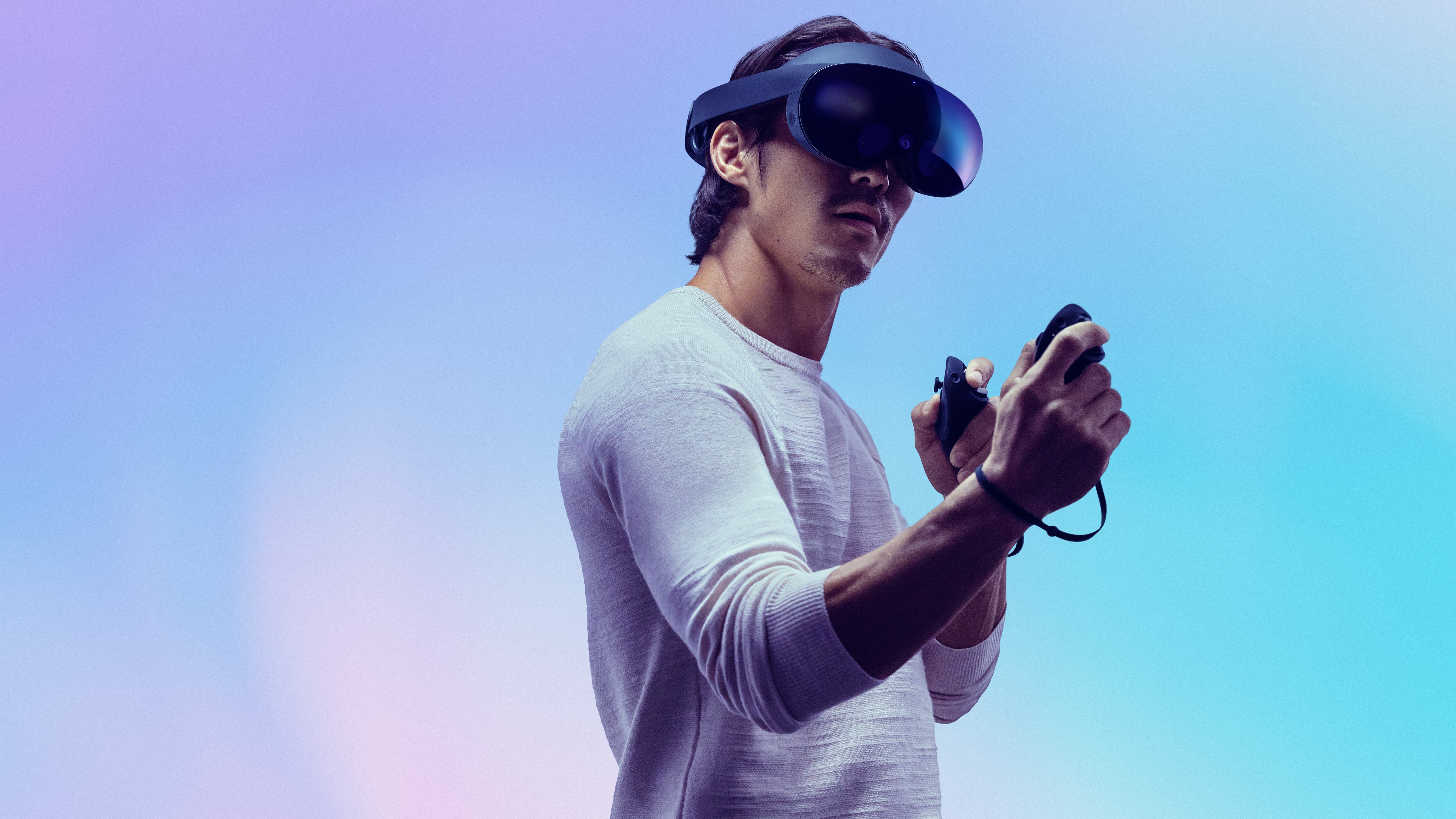The Meta Quest Pro looks incredible, but it won’t be for everyone
The Oculus Quest 2 successor is not a must-have upgrade

Meta has finally unveiled its Project Cambria headset, which we now know will officially be called the Meta Quest Pro.
Unveiled at Meta Connect 2022, this successor to the smash-hit Oculus Quest 2 – one of the best VR headsets we’ve used – this new headset looks set to live up to Meta’s promise of a next-gen experience, although not necessarily in the way fans expected.
Specs-wise, the Meta Quest Pro (mostly) beats out the Quest 2 with its 12GB of RAM, a new Qualcomm XR2+ chip that can deliver 50% more power than the chip in the Quest 2, and new features like eye tracking and color passthrough. Eye tracking, along with face tracking, will allow the headset to translate your emotions into VR, so that developers can now create avatars that are as expressive as you are.
Color passthrough will help the headset deliver more immersive augmented and mixed reality experiences. While you’re wearing the headset, its cameras and display will be able to see the world around you in full color, rather than the black and white that was all the Quest 2 could manage.

But it’s not all good news, unfortunately. First off, the device’s battery life is pretty disappointing. Meta told us it’ll last somewhere between one and a half and two hours; by comparison, the Oculus Quest 2 will last between two and three hours, and can go for longer if you use the official Elite Strap with battery add-on.
Meta also told us in a briefing ahead of the announcement that the Meta Quest Pro is “optimized for 90Hz”, but refused to give a straight answer as to whether a 120Hz refresh rate will be available on the hardware. Higher refresh rates help to make VR experiences less motion sickness-inducing; 90Hz is the recommended minimum and is currently the default setting on the Quest 2. However the Quest 2 is set to have 120HZ as its default setting in the near future, so it’ll be a shame if the upgraded Quest Pro doesn’t follow suit.
And then there’s the price. Coming in at $1,500 / £1,500 (around AU$2,630) the Meta Quest Pro is not cheap – it’s roughly four times the price of the Oculus Quest 2, and while you are getting some notable performance upgrades, you’re also getting the downgrades mentioned above. Though, if you factor in the need for a relatively good PC, it’s about what you could expect to pay for a VR setup using the Valve Index (which costs $999 / £919 / about AU$1,425).
Sign up for breaking news, reviews, opinion, top tech deals, and more.
But the thing is, the Meta Quest Pro is not a VR headset.
Analysis: This is not a VR headset
The Meta Quest Pro shares a lot of similarities with your typical VR headset. It’s strapped to your face, with a display that covers your eyes, and it can play many of the best VR games – everything that the Oculus Quest 2 can in fact. But Meta’s latest device is a mixed reality headset, not a virtual reality one.
That’s not inherently a bad thing. Based on our hands-on time with the Meta Quest Pro, its mixed reality experiences felt more real than anything we had experienced in pure VR. But for people looking to escape reality to the fullest extent possible, the Meta Quest Pro might not be the headset for you.
That’s because the headset doesn’t completely cover your eyes – it leaves a large space at the side and bottom, which means you can see the world around you. In mixed reality this is awesome, as it helps to better blur the line between real and virtual – for example, you’ll see your real arms and virtual hands perfectly line up, tricking you into thinking the fakes are more real than they are.

But in a more immersive VR experience – Resident Evil 4 VR for example – the real world will noticeably encroach on the virtual one, which may make it harder to feel like you’re really exploring a creepy town in rural Spain. You can use optional attachments to block out your surroundings, but the full cover won’t come packaged with the Quest Pro headset according to what Meta has told us – you’ll need to pay extra for it.
The Meta Quest Pro certainly seems to offer a premium experience, and it does offer improvements to VR games compared to what’s offered by the Oculus Quest 2. But if you aren’t fussed about mixed reality, and instead want to feel as immersed in virtual experiences as you possibly can be, Meta’s latest premium headset might not be for you.
Instead, you might find that the Pico 4 is the Oculus Quest 2 rival you’ve been waiting for.

Hamish is a Senior Staff Writer for TechRadar and you’ll see his name appearing on articles across nearly every topic on the site from smart home deals to speaker reviews to graphics card news and everything in between. He uses his broad range of knowledge to help explain the latest gadgets and if they’re a must-buy or a fad fueled by hype. Though his specialty is writing about everything going on in the world of virtual reality and augmented reality.